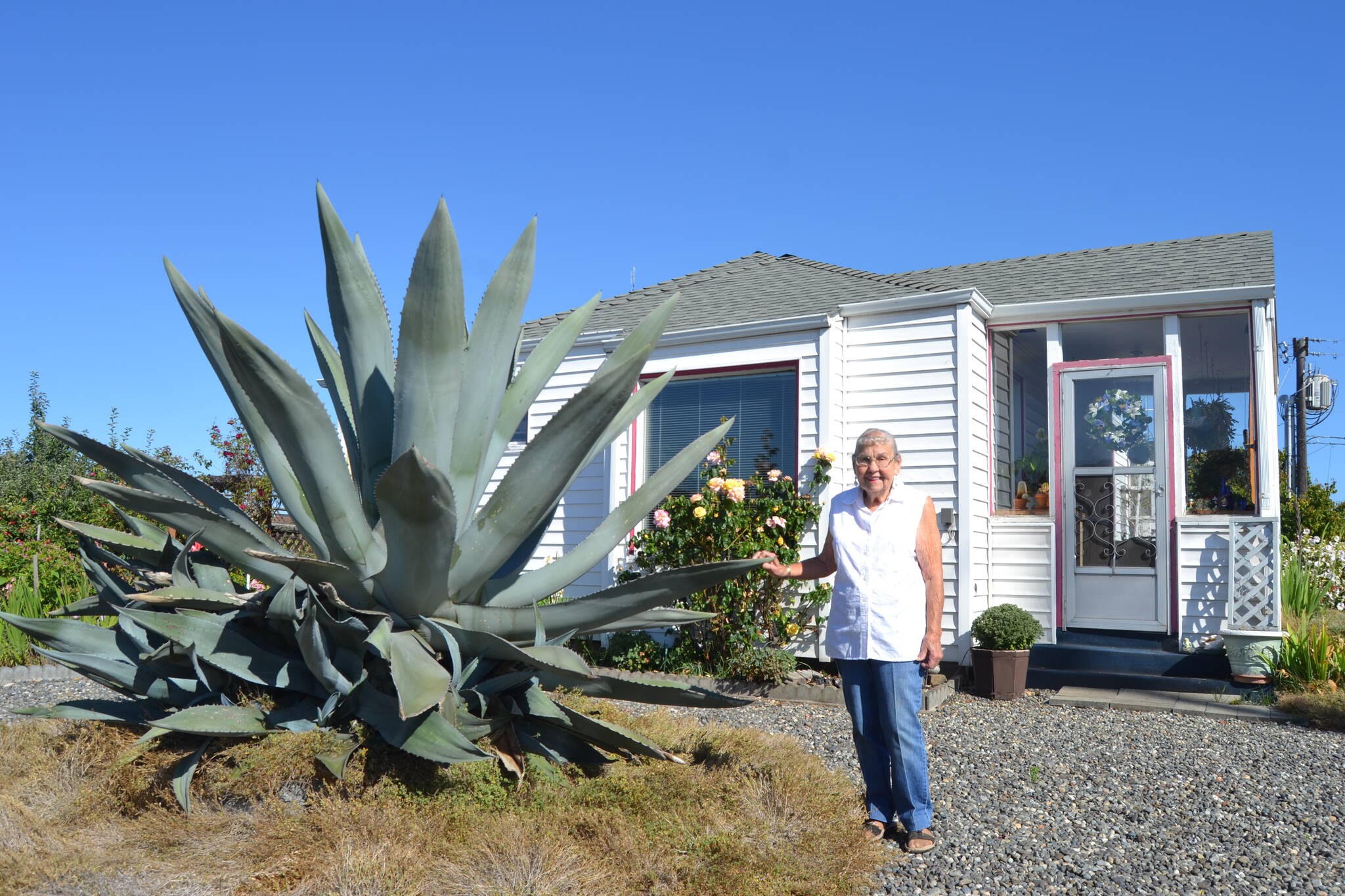SEQUIM — Isobel Johnston’s agave plant is about to go to new heights, blooming into a towering sight to see along Fifth Avenue in Sequim.
A new stalk emerged recently from the nearly 30-year-old plant, looking similar to a large caterpillar, which experts say is a sign it’ll bloom in the near future and grow to 25-plus feet.
The succulent is something Johnston, who recently turned 95, has been cultivating for 28-plus years and hoped to see bloom during her life.
“I had no idea when I planted it, it’d get to this,” she said.
Clallam County Master Gardener Susan Kalmar said the Agave Americana is unique for Sequim because of its size and for surviving so many years in colder temperatures.
She said the plant is hardy to temperatures as low as 20 degrees Fahrenheit, but it’s not usually happy when temperatures go into the teens.
However, Kalmar said, “this plant has been around for 25-plus winters.
“Add to that the fact that they don’t like a lot of winter moisture, and prefer sandy/gravelly soil with very well-draining soil and it’s pretty amazing.”
Johnston said she didn’t notice the stalk until her children pointed it out during a visit on July 16.
In a 2020 interview, Johnston said she purchased the then-baseball sized agave in the mid-1990s at a garage sale for a dollar.
It sat on her porch for about five or six years at about the same size, and then it began growing and growing, she said.
She and her husband William moved an antique hand plow sitting in a cement block circle in their front yard and planted the agave.
“Once we got it in the dirt, though, it just took off,” Johnston said.
Kalmar said the agave will likely bloom through the summer and survive into the fall. However, once an agave blooms, it will die.
Johnston’s plant’s bloom will be quite the spectacle though.
“The flower stalk could get 25-plus-feet tall and it is thick and tough,” Kalmar said. “It has yellow flowers and, like the plant, is very unique. It almost looks like a Dr. Seuss tree.”
Johnston said the winter seemed to hurt some of the leaves last year, after standing up so well to the elements years prior.
Since her 2020 interview, she said she’s conflicted about the plant blooming and then dying.
“I’m really glad I got to see it bloom,” Johnston said. “I’m sad it’ll die because I’m gonna miss it when it’s gone.”
There are at least four baby plantlets, or pups, growing at the agave plant’s base, she estimates.
Kalmar said once it blooms, the stalk and mother plant will have to be removed. Its leaves are incredibly sharp, especially the tip, and its sap can cause skin irritation.
“The babies, or pups, can be relocated, and there may be even more than four once the mother is removed,” she said.
“They should be dug out and replanted in a sunny, hot, well-drained area. The soil can and really should be poor — sandy/gravelly without fertilizer or compost.
“Because these are only marginally hardy in this area, planting these in any location that is not optimum could end poorly.”
Kalmar adds that, when in the teens, the pups can be covered when they are young and small.
Prior to growing a large agave in Sequim, Johnston lived in Hoquiam and gardened her whole life. She retired as a stock clerk for Grays Harbor Chair and Manufacturing Co., and her now-late husband William retired to Sequim in 1991 for the nice weather.
________
Matthew Nash is a reporter with the Olympic Peninsula News Group, which is composed of Sound Publishing newspapers Peninsula Daily News, Sequim Gazette and Forks Forum. Reach him at mnash@sequimgazette.com.

